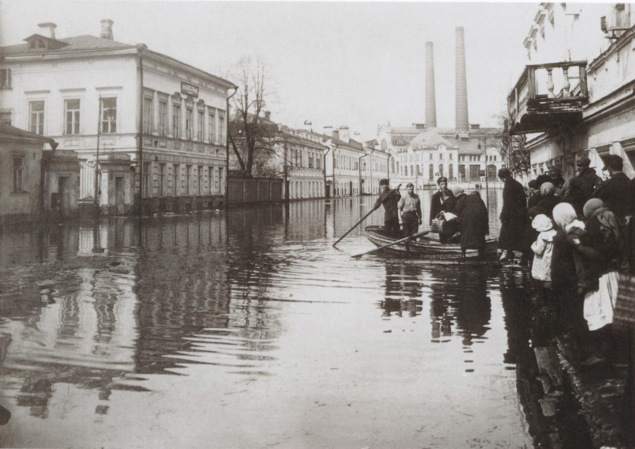Until 1786, there was no island in Moscow: Bolotny Island only was formed when it became necessary to repair the pillars of what is now Bolshoi Kamenny Bridge, which had been damaged by floods. Water had to be diverted to the swamp that occupied the old bed of the Moskva River. This was how the Vodootvodny Canal appeared, and how a part of the city—which included the royal gardens, a handful of churches, and the chamber of the “royal gardener” and Duma clerk Averky Kirillov on the Bersenevskaya Embankment—came to be surrounded by water. Surprisingly, despite having existed for over two centuries, the island still lacks an official name: it is sometimes called Balchug, sometimes Sadovniki, sometimes Bolotny, and even sometimes the Nameless Island.
Regular flooding meant the area around here was largely deserted. A flood in 1908 saw water levels rise by eight metres and any trace of any ‘island’ vanish: people travelled down what had once been streets in barges. In the intervals between the flooding, it was not just gardens, but people that were watered here: in 1552, Ivan the Terrible opened Russia’s first tavern for his “oprichniki” (guardsmen), and the Kamennomostsky state-owned drinking yard (later the Wine and Salt yard) operated here from 1734. Today’s Bolotnaya Square was occupied by the bustling stalls of the Bolotny market. Floods would only cease definitively in the 1930s, when the authorities began regulating the canal’s levels through the construction of granite embankments.
